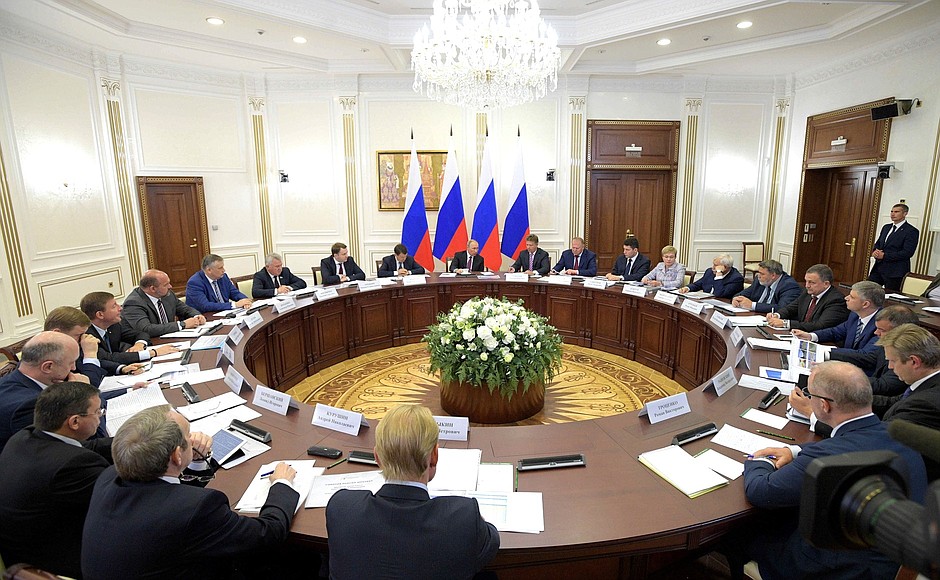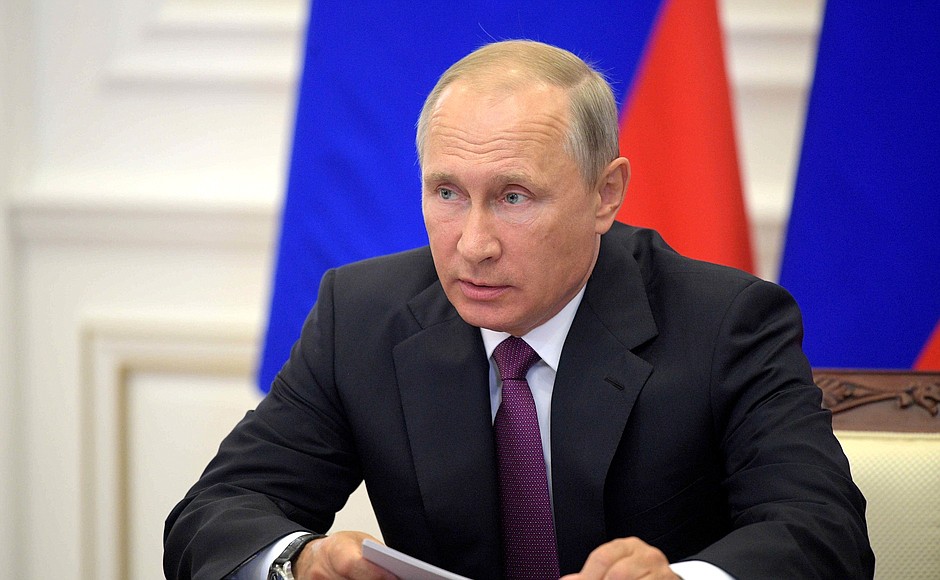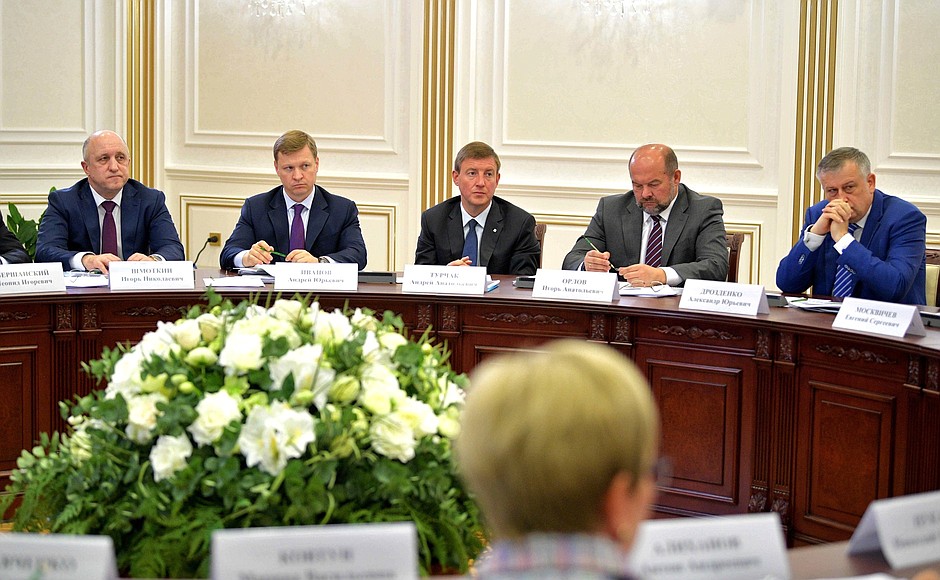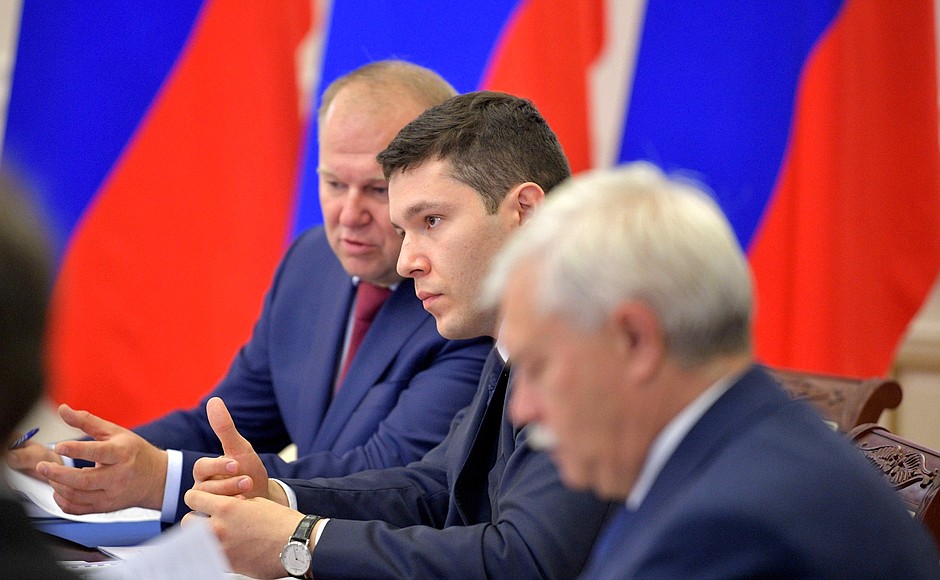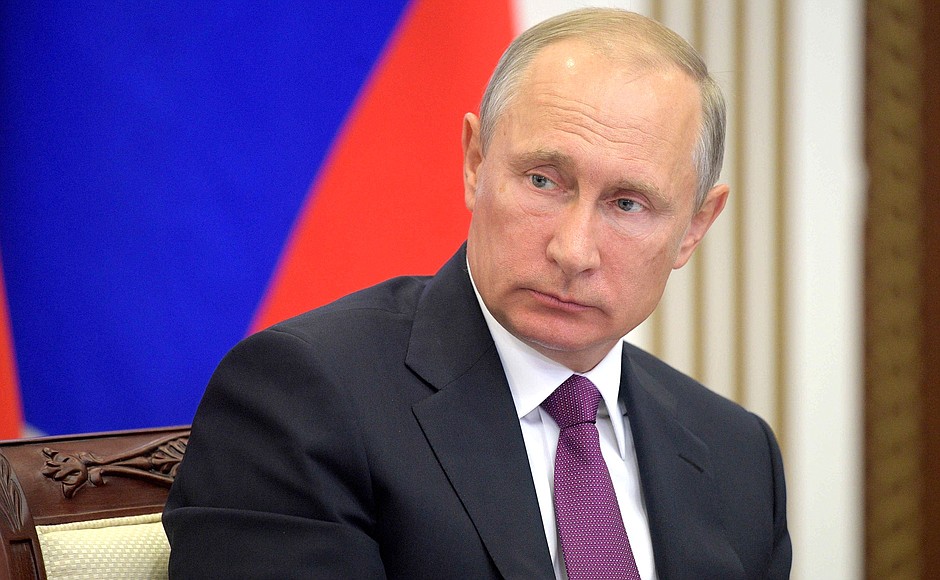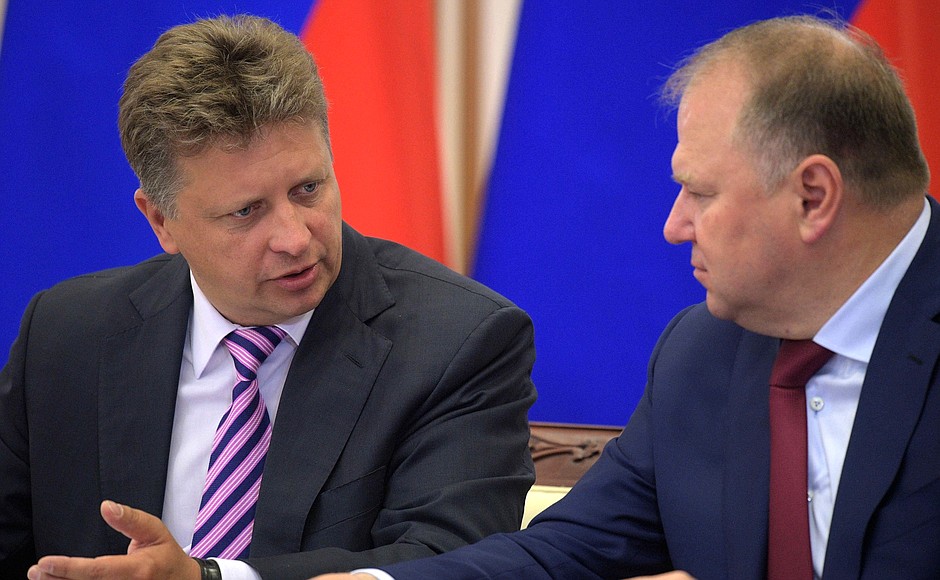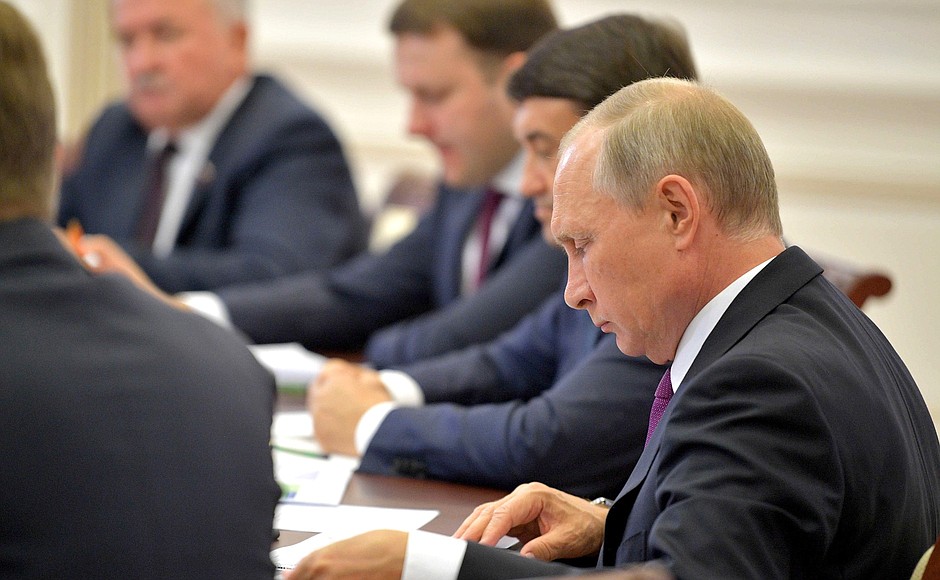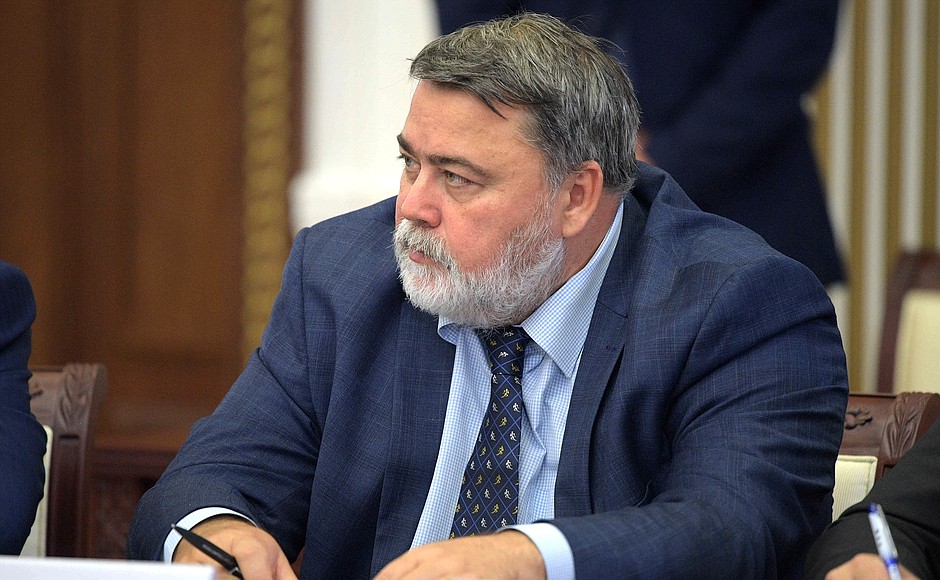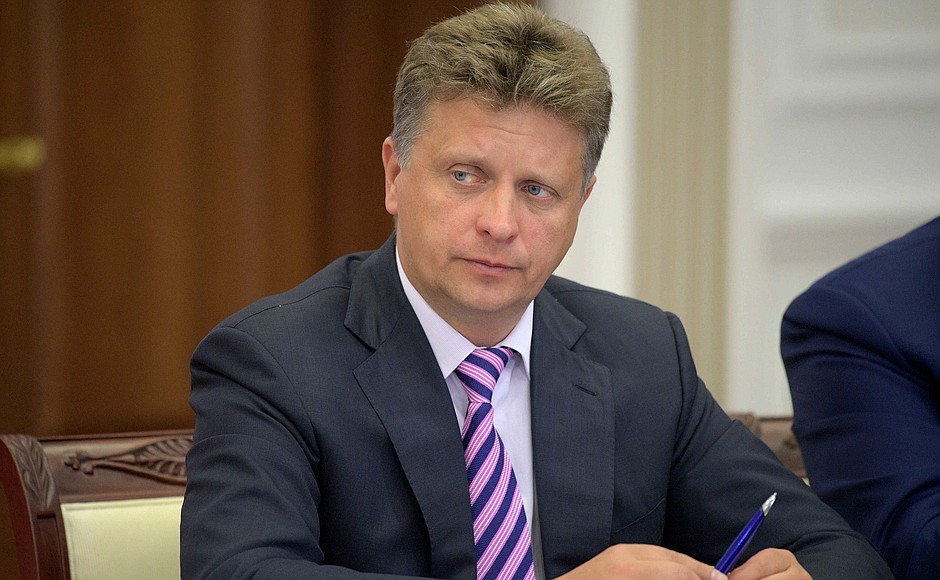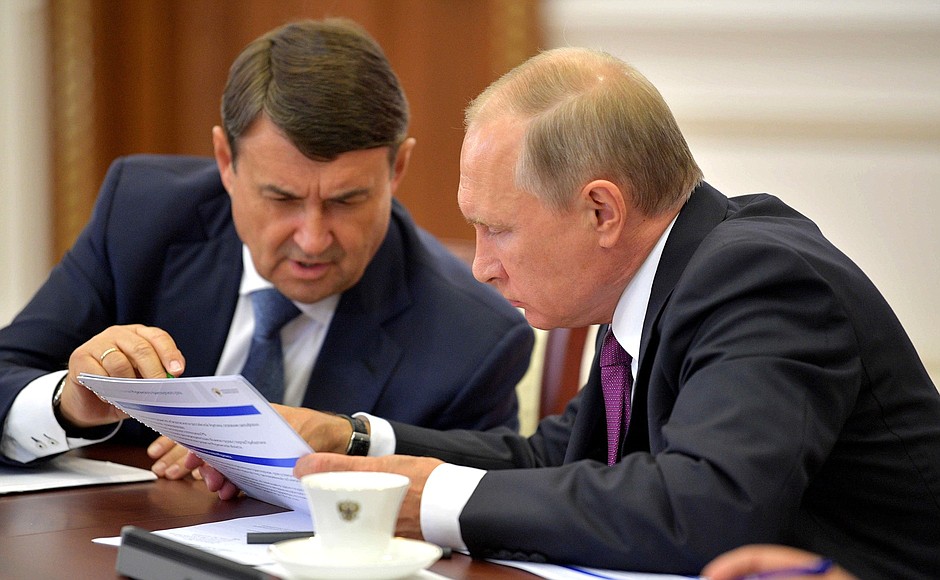President of Russia Vladimir Putin: Good afternoon, colleagues.
We are here to discuss the development of transport infrastructure in Russia’s northwest regions.
Last year, we addressed this same subject in the south, and spoke about the situation in southern Russia. Soon, in September, we will examine this same matter with regard to the Far East, in Vladivostok, where we will be meeting for the Eastern Economic Forum. In this manner, we will work steadily through all of the various issues regarding infrastructure development.
I would like to note here that we have quite a few infrastructure development projects that will lay the basis for our future economic growth. These projects are important for resolving social sector tasks and improving people’s quality of life too.
See also
The Northwest Federal District is one of the country’s key logistics centres, concentrating more than 40 percent of our port capacity, and with 10 supporting aerodromes.
By way of reference, at the start of this year, the Northwest ports accounted for 40 percent of the total national capacity, handling 397 million tonnes of the more than 1 billion tonnes that were shipped through Russia overall. The Northwest Federal District is also home to 10 of the country’s 62 supporting aerodromes.
Large-scale work is underway at the federal and regional levels to develop the transport sector in the Northwest, including with the launch of what I would call highly significant projects.
Work is nearing completion on the high-speed M-11 Moscow-St Petersburg highway and the Sortavala highway, construction continues at the Bronka deep-water facility, and development continues at the sea port of Ust-Luga in the Leningrad Region. Railway approaches to the seaports of the Baltic and Arctic basins are being expanded, and reconstruction of the Kaliningrad and St Petersburg airports is underway as part of preparations for the FIFA World Cup.
We must continue developing the logistics potential of Russia's Northwest, making it more competitive, developing modern passenger and freight handling services, and making use of the region’s good geographical location for strengthening Russia’s foreign trade ties.
Of course, we must also offer investors convenient cooperation instruments that take into account the particular nature of infrastructure investment: high investment volumes and long payback periods. This applies to transportation projects as well. We could use the so-called infrastructure mortgage that I spoke about at the St Petersburg International Economic Forum in June.
This instrument represents a new practice. We would need to work through all of the organisational and financial matters and make a thorough study of the projects’ economics. I propose that we discuss this matter today as well.
Let me reiterate that we need to adopt an integrated approach to transport infrastructure development in the Northwest and across the country in general. Construction of facilities like this one should be consistent with the existing and future needs of businesses and people, and be coordinated with the development of supporting infrastructure. Of course, we need to ensure concerted efforts at all levels when implementing major projects.
One of the priorities is the development of the Murmansk Transport Hub. Under the plan, this project is to be competed in 2020. I would like to hear a progress report on this project, what has been done, whether there are any challenges, etc. Let me note that expanding Murmansk port capacity is instrumental for Arctic shelf development projects and plans to develop the Northern Sea Route, as well as exports of coal and other products.
Colleagues, having said that, I would like to raise a sensitive issue. In Murmansk and other seaports of Russia where uncovered coal is shipped, the environment is a matter of special concern. I am referring to the high concentration of coal dust in the air, as you probably heard during Direct Line from people in Nakhodka.
Of course, fully giving up on shipping coal in the open is impossible. We understand the economic aspect, and that this system has existed for decades. In fact, this is how it worked from the outset. What I want to say today is that as we develop coal terminals and choose locations for expanding port capacity, we need to make the environment a priority, and pay as much attention as possible to these issues, taking into consideration the interests of the people living nearby.
And of course, colleagues, and I am turning now to business representatives, we need to implement new, advanced trans-shipment technologies based on strict environmental standards and norms. At the end of the day, this makes more economic sense in terms of technology. These are obviously long-term investments, but eventually they will also generate returns.
Moving on, there is another important port infrastructure facility in the Northwest: the Pionersky Terminal on the Baltic Sea. It is intended for cruise, passenger and cargo ships, creating additional opportunities for developing the Kaliningrad Region as a tourist cluster. This project should get off the ground this year and be completed on time. Among other things, this is important for improving Kaliningrad Region’s transport accessibility.
Let me remind you that the terminal’s annual capacity will be 225,000 passengers from cruise ships and 80,000 passengers travelling by ferry. The construction term is quite short, only 21 months. In this connection, let me remind you that there have been instructions to develop ferry lines with the Kaliningrad Region. Today, I would like to hear how this work is advancing.
I would also like to recall the various instructions on developing the Northwest’s road infrastructure. The federal roads here are in a better condition on average than in the country as a whole, but this concerns the federal roads only. As for the regional roads, strange though it might seem, the situation in the Northwest is worse than overall in the country.
Regarding federal roads, at the start of this year, more than 82 percent of the total length of federal roads in the Northwest Federal District was up to standard. The figure for the country as a whole is slightly over 71 percent. But only about 32 percent, 31.8 percent of the regional roads are up to standard, while the overall figure for the country is 41.5 percent. It is strange that the Northwest, which is quite well developed economically, should have its regional roads in such poor condition.
We have already discussed the repair of the most problematic sections and issued the relevant instructions regarding federal budget support for this work. I am referring to the roads in Pskov, Velikiye Luky, the Brin-Navolok-Plesetsk stretch in the Arkhangelsk Region, the Usinsk-Naryan-Mar stretch in the Nenets Autonomous Area and several others. I would like to hear today about the decisions taken and how this work is being financed.
Finally, regions in the Northwest Federal District border on 7 different countries. A fifth of all state border checkpoints operate here. There are 312 such checkpoints in Russia as a whole, with 65 operating here in the Northwest. Most of these checkpoints have had no upgrades since the 1990s. What’s more, they have a financing shortfall of about a third below what they are supposed to receive for maintenance and operation. The result is queues building up to cross the border. This costs people their time. That is not to mention the lack of basic conveniences for the personnel at the checkpoints and the people passing through. We need to return to the matter of financing for these facilities. We also need to engage in repair work, of course, and bring the checkpoints up to standard, giving them the proper conditions for quick and convenient border crossings. I hope to hear concrete proposals today on this matter.
Let us start our work.
<…>
